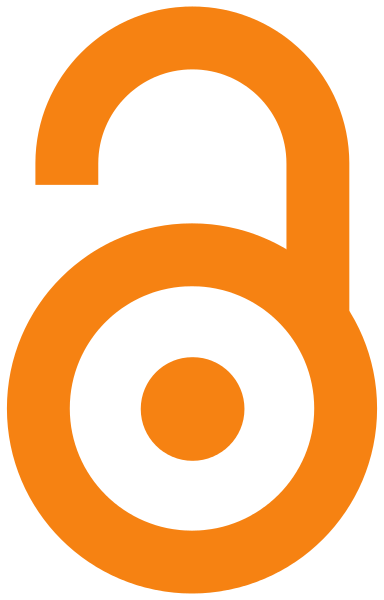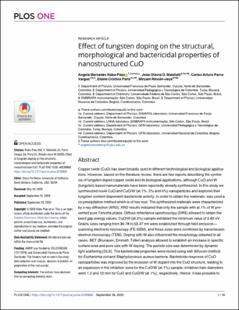Effect of tungsten doping on the structural, morphological and bactericidal properties of nanostructured CuO
Artículo de revista
2020-09-28
PLOS ONE
Washintong D.C , Estados Unidos
Copper oxide (CuO) has been broadly used in different technological and biological applications. However, based on the literature review, there are few reports describing the synthesis of tungsten doped copper oxide and its biological applications, although CuO and W (tungsten) based nanomaterials have been reportedly already synthesized. In this study we synthesized novel CuO and CuO/W (at.1%, 2% and 4%) nanoparticles and explored their tungsten content-dependent bactericide activity. In order to obtain the materials, was used a co-precipitation method which is of low cost. The synthesized materials were characterized by x-ray diffraction (XRD); XRD results indicated that only the sample with at.1% of W presented pure Tenorite phase. Diffuse reflectance spectroscopy (DRS) allowed to obtain the band gap energy values; CuO/W (at.2%) sample exhibited the minimum value of 2.62 eV. Grains sizes ranging from 39.78 to 53.47 nm were established through field emission—scanning electronic microscopy (FE-SEM), and these sizes were confirmed by transmission electron microscopy (TEM). Doping with W also influenced the morphology obtained in all cases. BET (Brunauer, Emmett, Teller) analysis allowed to establish an increase in specific surface area and pore size with W doping. The particle size was determined by dynamic light scattering (DLS). The bactericidal properties were tested using well diffusion method for Escherichia coli and Staphylococcus aureus bacteria. Bactericide response of CuO nanoparticles was improved by the inclusion of W dopant into the CuO structure, leading to an expansion in the inhibition zone for the CuO/W (at.1%) sample; inhibition halo diameters were 1.5 and 12 mm for CuO and CuO/W (at.1%), respectively. Hence, it was possible to infer the remarkable importance of the crystalline phase, morphology, particle size and specific superficial area of the CuO/W (at.1%) nanoparticles in its bactericide performance. WO3 secondary phase affected the bactericide response of the materials obtained at at.2% and at.4% of tungsten conten
Descripción:
Effect of tungsten doping on the structural, morphological and bactericidal properties of nanostructured CuO.pdf
Título: Effect of tungsten doping on the structural, morphological and bactericidal properties of nanostructured CuO.pdf
Tamaño: 2.779Mb
 PDF
PDF
 LEER EN FLIP
LEER EN FLIP
Título: Effect of tungsten doping on the structural, morphological and bactericidal properties of nanostructured CuO.pdf
Tamaño: 2.779Mb
 PDF
PDF
 LEER EN FLIP
LEER EN FLIP















